The chips of the future
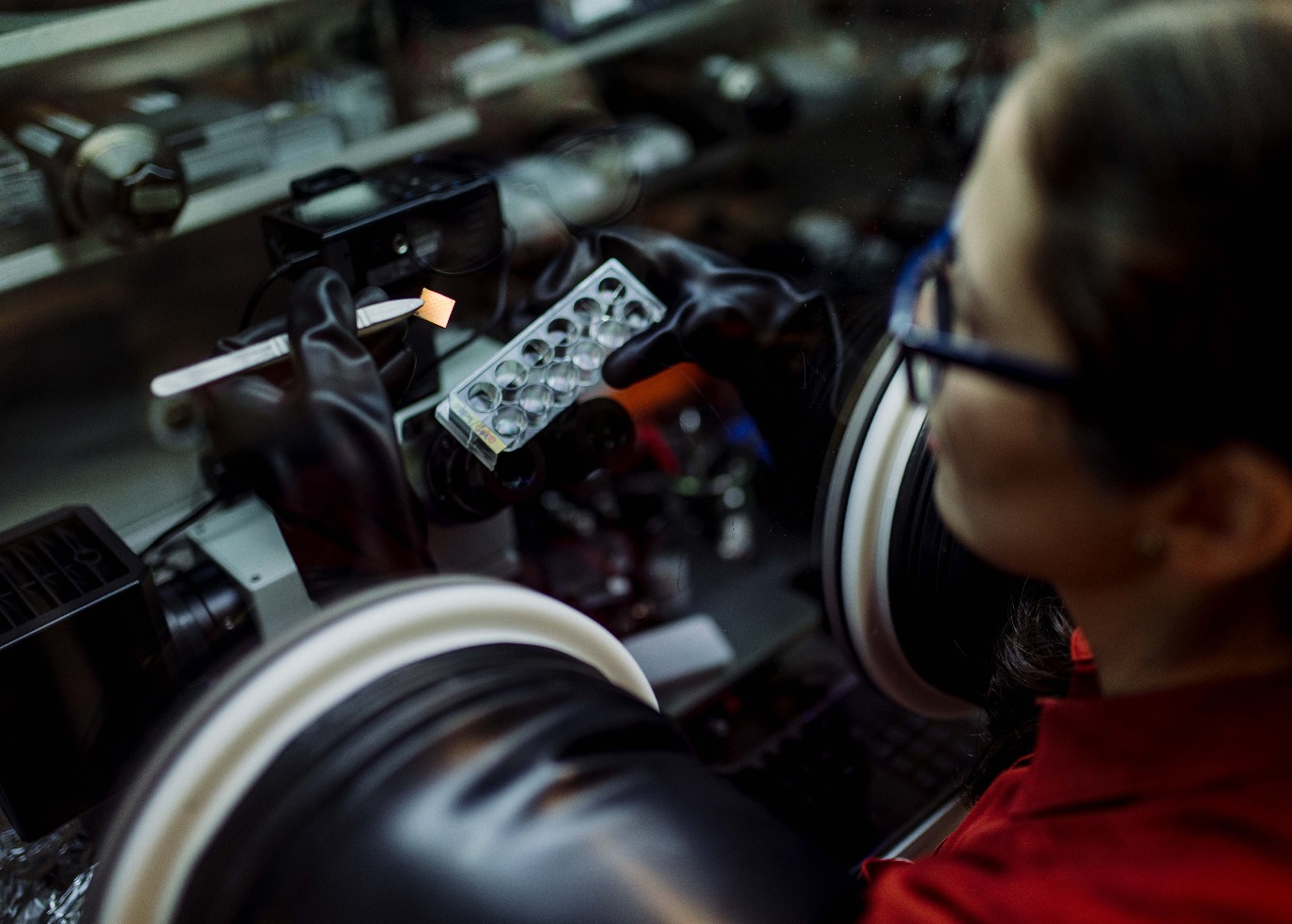
‘The computers we currently use are not designed for AI,’ says Beatriz Noheda, Professor and Director of the Groningen Cognitive Systems and Materials Center, CogniGron. As a result, they use an unnecessarily large amount of energy, and we are reaching the limits of our current technology. That is why CogniGron is working on new materials that mimic the way the brain computes. In addition, CogniGron Professor Tamalika Banerjee will develop chips for energy-efficient computers with her start-up company IMChipN .
FSE Science Newsroom | Charlotte Vlek

‘Imagine walking into a room full of people and searching for one person in particular,’ Noheda paints a picture. For a human, this task is a piece of cake but a computer—even one with modern AI-based face recognition—is not very good at it. The computer will scan every pixel, one after the other, which requires a huge amount of energy, whereas we humans can prioritize by looking at faces alone and checking multiple features at the same time: black hair or blond, glasses or no glasses. Noheda: ‘In order to recognize a face, a computer needs about 20,000 Watts compared to an estimated 20 Watts a human needs.’
In order to recognize a face, a computer needs about 20,000 Watts compared to an estimated 20 Watts a human needs
But in fact, a lot of modern AI is inspired by the human brain. Such as the popular machine learning method, for instance, which involves a computer learning a new task by being fed a lot of training examples. The problem is, however, that we are running these AI algorithms on digital computers that are not at all similar to the brain. And that is what makes AI such a huge energy guzzler.
About hardware and software
A human brain works fundamentally different to a computer: it stores information not just as zeros and ones but also as everything in between. And new information is stored in the hardware itself, so to speak: in the connections between neurons. A child who learns the connection between the sound ‘daddy’ and the image of daddy’s face, for instance, develops a physically stronger connection between neurons in the brain.
To simulate one neuron you need many transistors
Noheda: ‘The brain doesn’t distinguish between hardware and software or between memory and processing. It’s all integrated.’ Besides, the connections in the brain can be weak or strong or something in between, which is very different from the transistors on a computer chip that can only be ‘on’ or ‘off’, i.e. encoding information in zeros and ones.
Noheda explains what a difference that makes: ‘To simulate one neuron you need many transistors. But we are working with new systems, so-called memristors: hardware that can evolve over time, depending on how much current has gone through it in the past.’ Similar to how a child develops stronger connections in the brain. In particular, Noheda is working with crystals containing a network of lines that can conduct a current, and those lines are able to conduct better when more current has gone through it in the past. ‘That’s how people learn!’ Noheda says. ‘And we can grow this crystal at a nanoscale in our lab.’
The network of lines in Noheda’s crystals are there because the molecules in the crystal are not all pointing in the same direction. Therefore, domains of similarly oriented molecules exist within the crystal, and the edges between these domains are found to conduct better than the rest. In addition, there can be different levels of conductivity, which means they can be in more states than just zero (non-conductive) or one (conductive). The edges also conduct better when a current has passed through it in the past: it is behaving like a memristor.
PhD student Jan Rieck studies these crystals in the lab, while PhD student Anne-Men Huijzer investigates how these memristors behave in a network, under the supervision of mathematician Bart Besselink. Could they mimic neural networks, a widely used method in AI, directly in the memristor’s material? Noheda: ‘It seems that some properties of neural networks occur naturally in such a network of memristors. This will way, we can harness the laws of nature to perform certain calculations.’
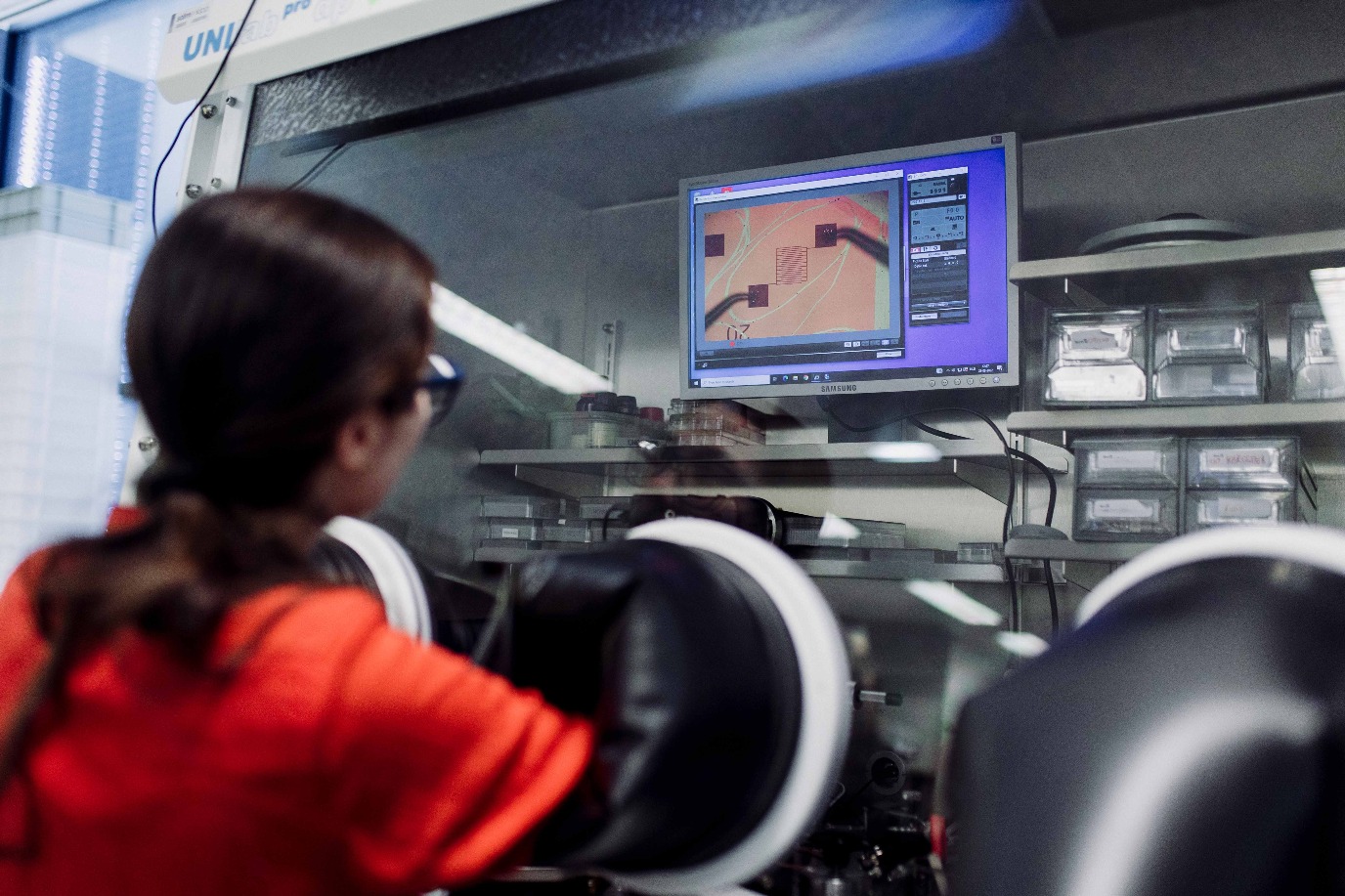
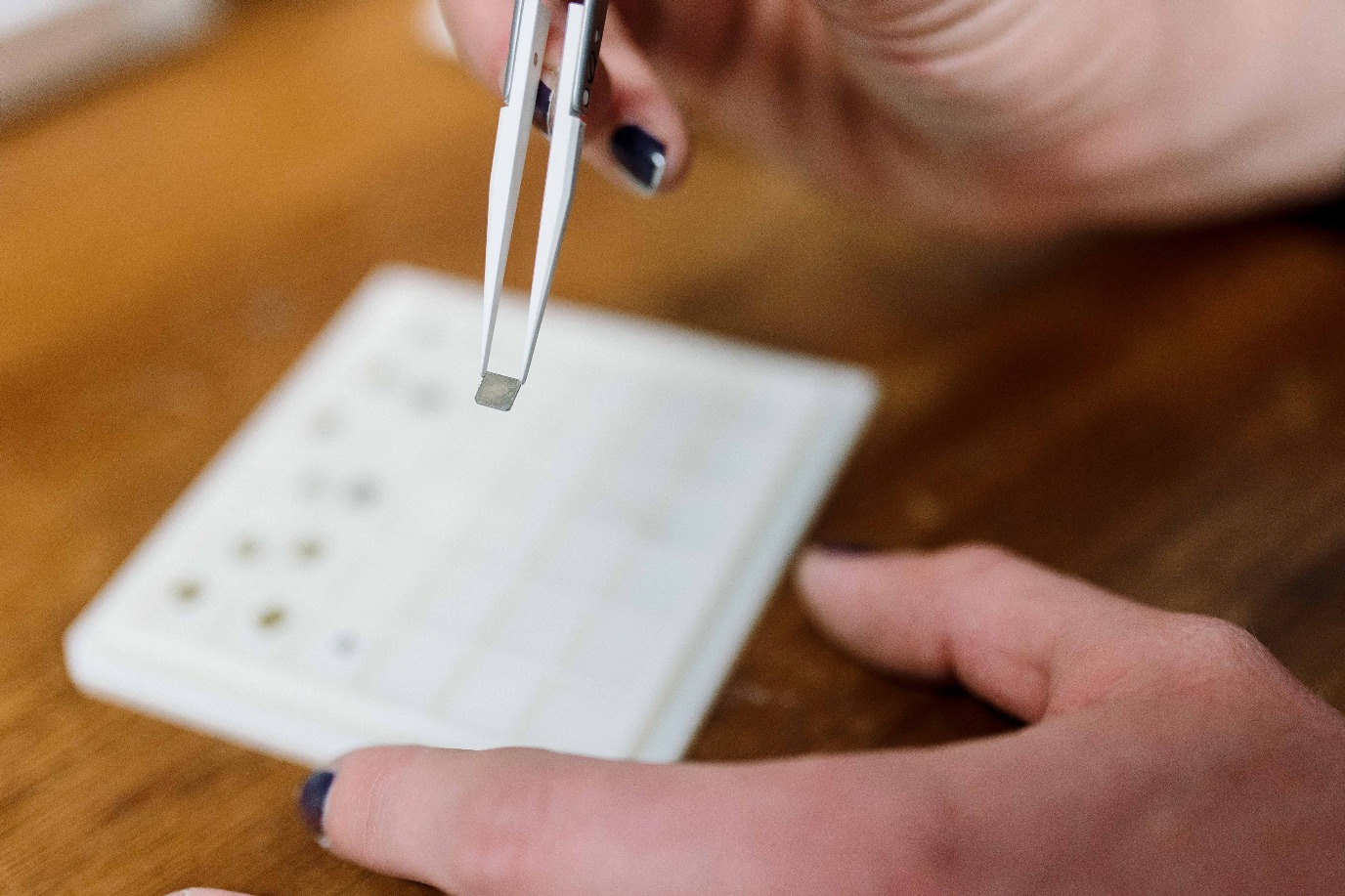
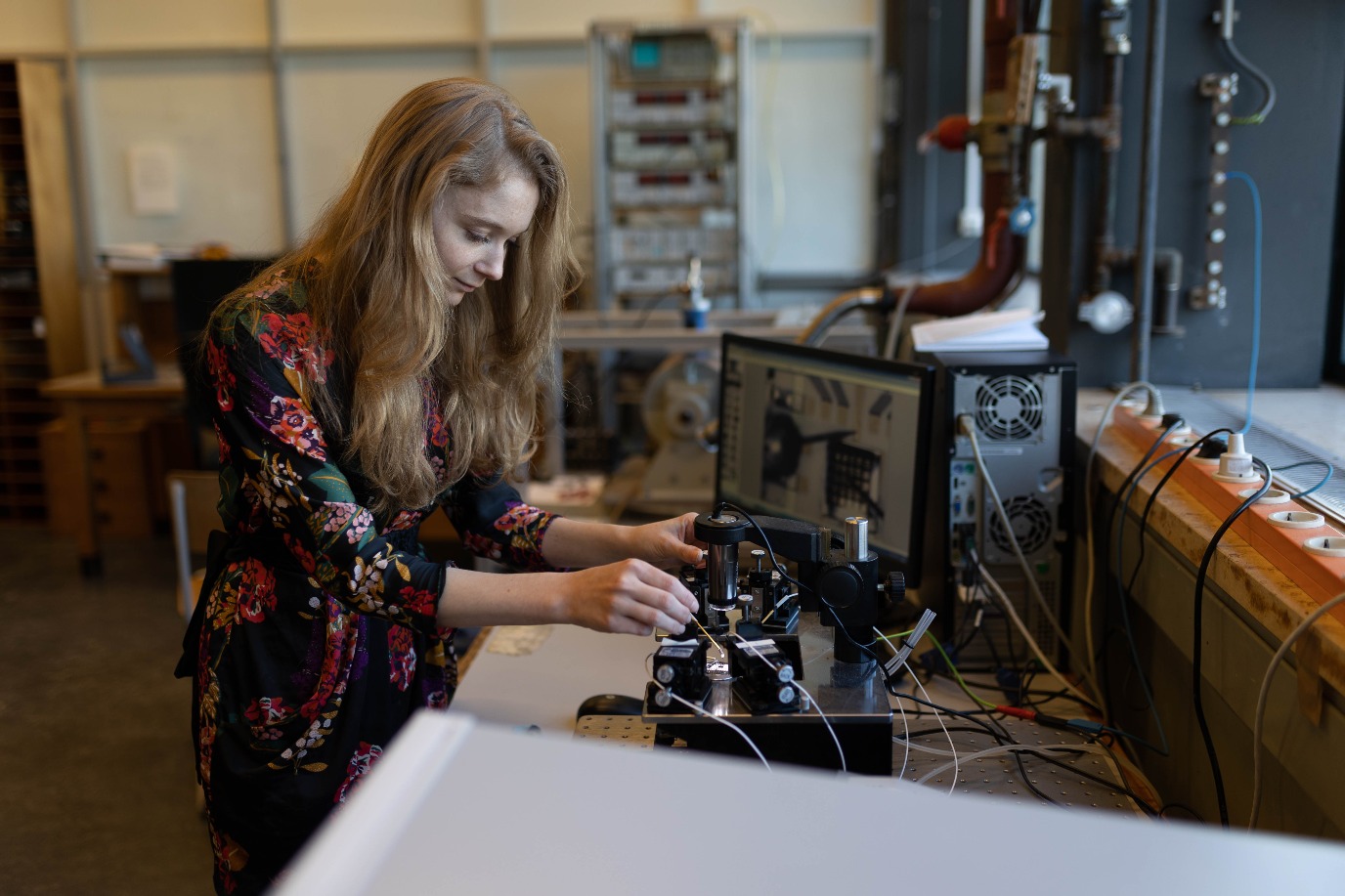
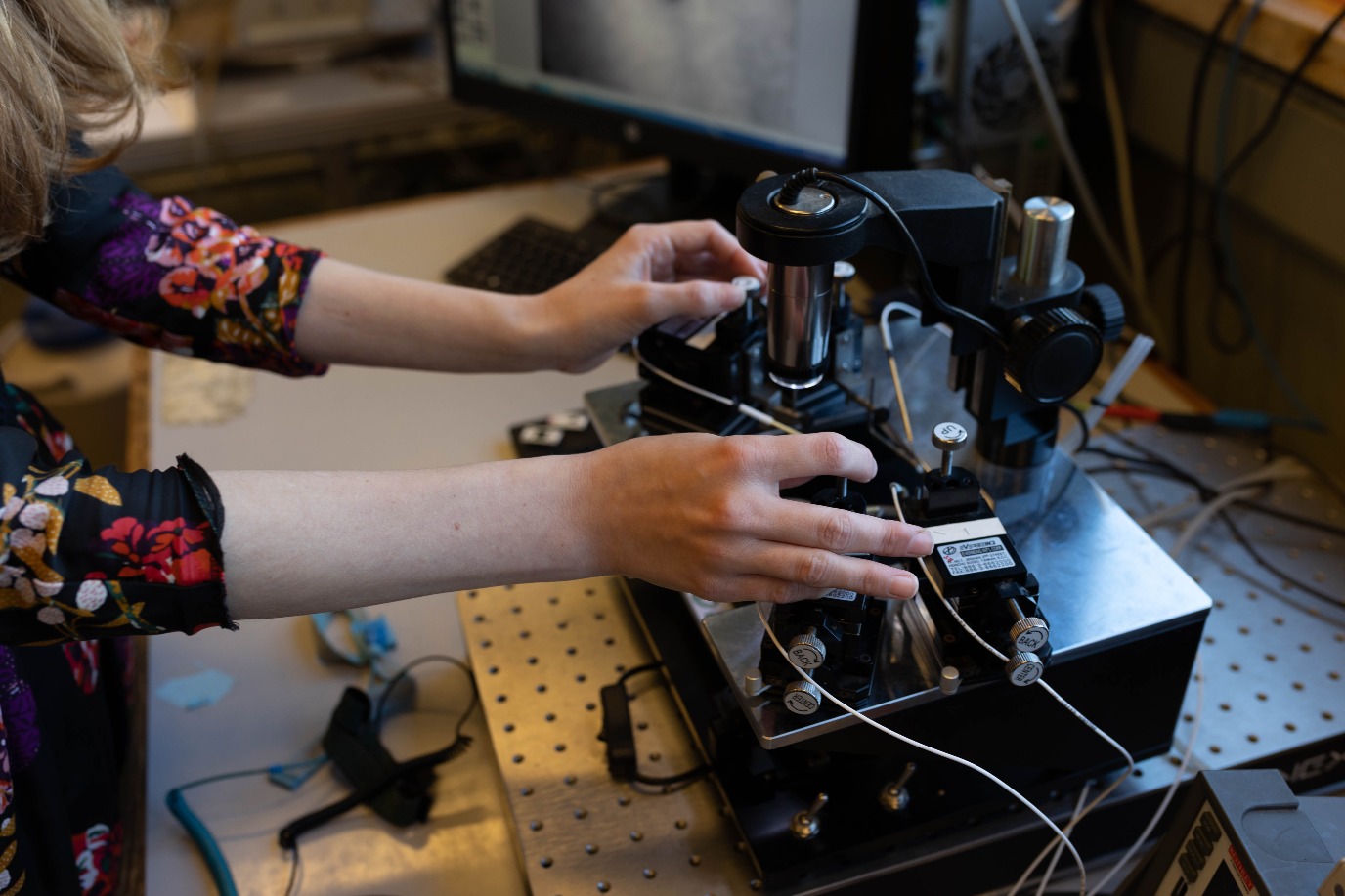
About memory and processing
Think of medical applications and self-driving cars, but also the gaming industry: they really demand instantaneous decision-making, without any delays
‘If you open up the hardware of your laptop,’ Banerjee says, ‘you’ll see that the processor and the memory of your laptop are not in the same location.’ In addition, we send a lot of information to the cloud, and it takes about one or two seconds to retrieve this data again. And here is another piece of trivia: one data centre—the cloud relies on many such data centres—uses about as much power as 80,000 households.
By keeping memory and processing close together, a computer will already be more energy efficient. ‘But the speed of data exchange also limits the overall speed of the computer,’ Banerjee notes. ‘Think of medical applications and self-driving cars, but also the gaming industry: they really demand instantaneous decision-making, without any delays.’
IMChipN , Banerjee’s start-up in progress, will produce in-memory chips with a combination of old and new materials, in which memory and processing take place in the same location. The N at the end of the name stands for North: Banerjee would like to keep the company in the Northern Netherlands. Her PhD students have been developing the required new materials and devices: ‘We’ve got the NanoLab here as well as the CogniGron labs, in which we’ve already done a lot of promising work.’
Banerjee herself has worked with silicon chips for years. ‘But the current materials limit the device’s capacity,’ she explains.
In Banerjee’s lab, PhD students are working on complex oxide. ‘These materials have many more degrees of freedom than silicon,’ Banerjee explains. ‘You can make them into semiconductors or superconductors. You can make them ferroelectric or change their magnetic order.’ These are all physical properties that determine the behaviour of the material, and by employing them in a smart way, you can make a memristive device.
Banerjee explains: ‘We can tailor the material in such a way that its behaviour resembles that of neurons and connections between neurons capable of exhibiting values between zeros and ones. We’ve shown that it also works very well at the nanometre scale. Actually, we’ve found some spectacular results on such a small scale.’
According to Banerjee, the current generation of computers is mostly limited by three problems: (1) memory and processing are not in the same location, (2) it can take about one to two seconds for data to be retrieved from the cloud, and (3) after years of innovation, we are now reaching the end of what is possible with current materials.
That is why, with IMChipN, she wants to offer new hardware that is easy to manufacture, sustainable, and can be mixed and matched with existing technologies. The start-up will develop a chiplet, a small custom-made chip for a specific task.
Read also:
| Published on: | 18 July 2024 |
A robotic arm in a factory that repeatedly executes the same movement: that’s a thing of the past, states Ming Cao. Researchers of the University of Groningen are collaborating with high-tech companies to make production processes more autonomous.
| Last modified: | 22 August 2024 1.37 p.m. |
More news
-
21 November 2024
Dutch Research Agenda funding for research to improve climate policy
Michele Cucuzzella and Ming Cao are partners in the research programme ‘Behavioural Insights for Climate Policy’
-
13 November 2024
Can we live on our planet without destroying it?
How much land, water, and other resources does our lifestyle require? And how can we adapt this lifestyle to stay within the limits of what the Earth can give?
-
13 November 2024
Emergentie-onderzoek in de kosmologie ontvangt NWA-ORC-subsidie
Emergentie in de kosmologie - Het doel van het onderzoek is oa te begrijpen hoe ruimte, tijd, zwaartekracht en het universum uit bijna niets lijken te ontstaan. Meer informatie hierover in het nieuwsbericht.
